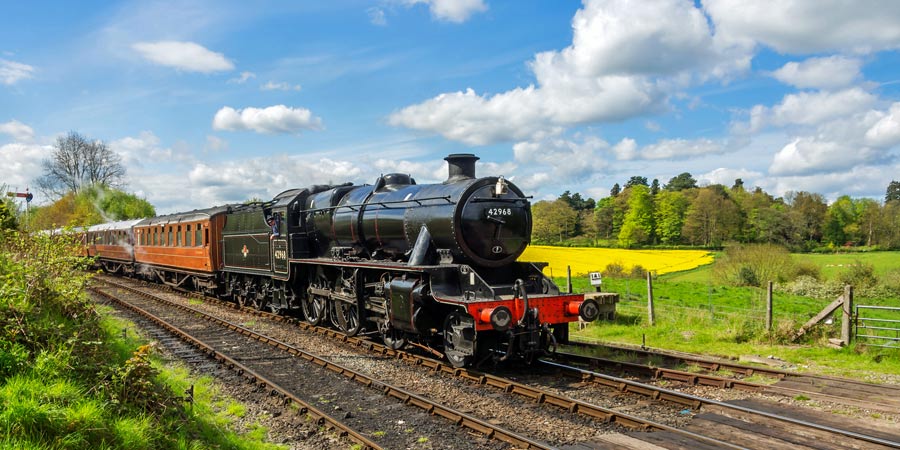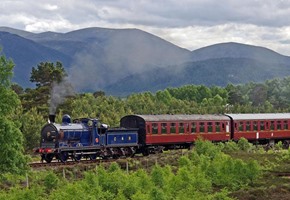The delectable St Ives Bay Line connects St Erth with pretty St Ives, a popular seaside town that is known for its white sandy beach and attractive harbour. The train travels just over 4 miles to reach its destination, passing the Cornish coast which is an excellent route to spot sea birds. It then crosses the Carbis Bay Viaduct before descending to St Ives Station.
The NYMR is perhaps Britain's busiest and most popular heritage railway. It transports you back in time on a steam-hauled journey in restored carriages from Pickering to the scampi capital of England, Whitby. The train passes through the beautiful countryside of the North Yorkshire Moors. The railway holds a number of special events including a Wartime Weekend, where the station is transformed to reflect the look of its Second World War operation.
The 'Iron Road to the Isles' is one of the most famous railway lines in the world, and crosses the environs of the Scottish Highlands that showcase a varied topography, furnished with heather and remote scatterings of sheep. Only by rail can you truly experience a landscape such as this. As one of the world's most scenic rail journeys and with the claim to fame of carrying the Hogwarts Express over the majestic Glenfinnan Viaduct - this railway line has deservedly been named as one of the world's best.
The Settle to Carlisle is a 73-mile line laid down in the 1870s and cuts through the desolate Yorkshire Dales and North Pennines. This railway's crowning glory is the expansive Ribblehead Viaduct. This iconic and majestic feat of engineering carries the line above the valley of the River Ribble, and adds significant focus to a landscape that charms in its desolation.
The Severn Valley Railway was constructed between 1858 and 1862, originally linking Hartlebury with Shrewsbury, and in 187 was merged into the Great Western Railway. Although the line was never turning a significant profit it was important in transporting agricultural freight and coal. In the Second World War it became an important means of by-passing the West Midlands. Although the railway is generally associated with the Beeching Report, the line was in fact set for closure from an earlier date. Today it is one of England's most popular heritage railways.
The popular Ffestiniog Railway was originally used heavily in the slating industry of the 1850s, with slate mined from Blaenau Ffestiniog. As the business continued to boom and expand, the need for a steam locomotive for the railway was realised. By the 1920s the local slate industry had declined for a number of years, and over the coming decades the railway line was geared more towards tourism than industrial pursuits. Today the Ffestiniog Railway is a busy tourist attraction thanks in part to the beautiful scenery than adorns its route.
The oddly named Bittern Line is a railway that traverses the Norfolk Broads and takes its name from the rare bird that makes its home there. Because of the line's location, it has long been a favourite of nature lovers. Due to the popularity of this railway, it has seen a service upgrade in recent times, and continues to trade strongly as the most significant railway that crosses the Norfolk Broads.
The aptly named Far North Line is the northernmost railway in the United Kingdom and is located entirely within the Scottish Highlands. The line runs from Inverness to Thurso & Wick and crosses miles of remote scenery, though it is not entirely unpopulated - it's not uncommon to see deer and other local wildlife along the journey.





